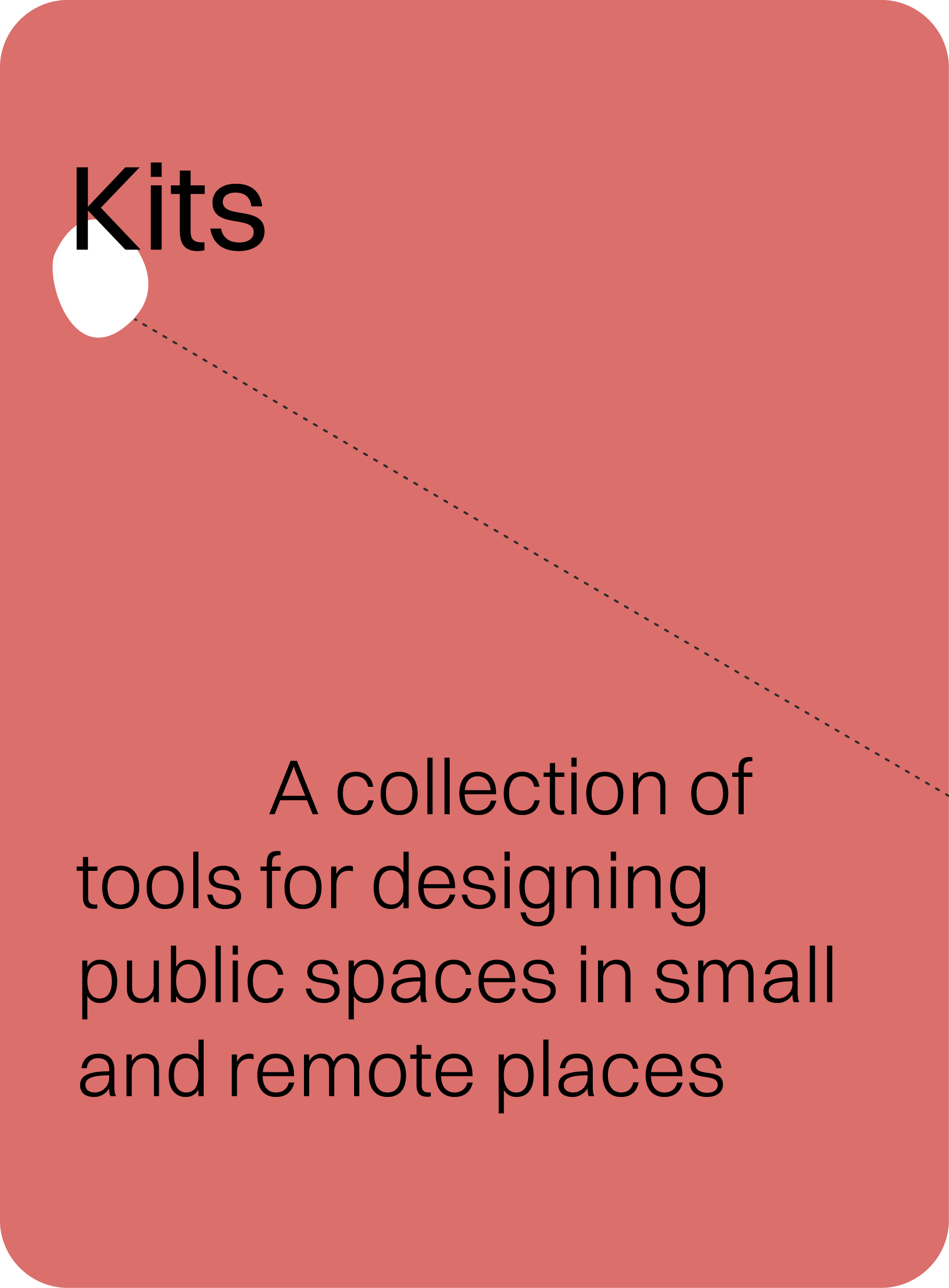
The Kit
Tools, instructions, tips, and examples of use.
How the Toolbox is organised
The Toolbox consists of six Kits designed to complement and synergise with each other and provide a comprehensive framework for project leaders. By leveraging the tools within each Kit and integrating them across the system, project leaders can gain insights, set clear objectives, and evaluate their initiative’s social, cultural, economic, and environmental impacts. The methodology promotes a structured, iterative process, enabling informed decision-making and maximising positive project outcomes. Through a combination of primary and secondary research, observation, and discussion, the Toolbox aims to uncover the community’s key issues, organising them in guiding perspectives toward the future.
How to use the Kits?
The Kits should be used iteratively; the outcome of one step could influence the result of the other and vice versa, and it might be necessary to rethink things and adjust or loop the process through different iterations.
We suggest testing each tool and getting familiar with it before using it in a generative workshop or co-creation session.
Some tips before starting
Choosing the place of intervention:
it may help to choose the right place of intervention – that gives the highest chances of a result, and the best type of intervention – that has the best relationship with the local opportunities that aim for long-term changes.
Interacting and co-creating with people:
for all phases of the process, we strongly suggest thinking of ways to create activities that interact with the local environment and community.
Go native:
the more you familiarize and integrate into the local place, the better!
Hack the Toolbox!
according to the characteristics of your small and remote place, you will need to decide which tools are appropriate and when and how you will be able to activate co-creation activities with the local community.
Explore the Kits!
Explore the book
